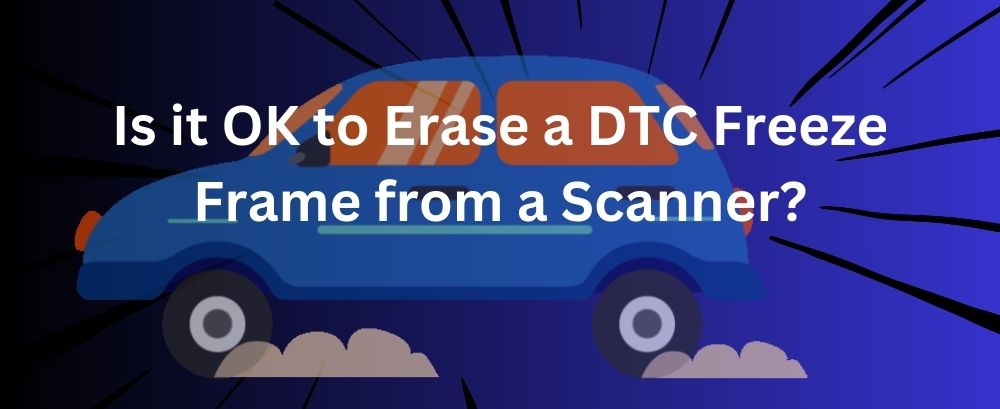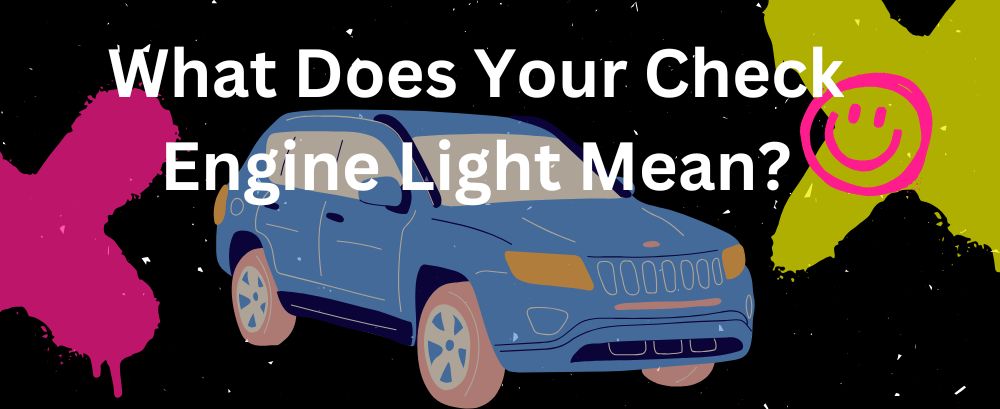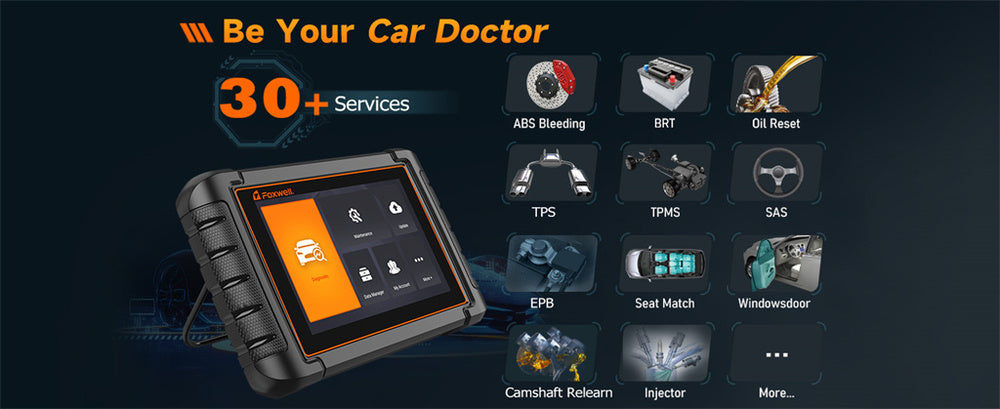When your car’s check engine light or another warning light illuminates, it usually means that the vehicle’s onboard diagnostic system has stored a Diagnostic Trouble Code.
This code helps identify the problem and is often accompanied by freeze frame data—a snapshot of the vehicle’s conditions at the time the fault was detected. But is it a good idea to erase this data?
We’ll explore what freeze frame data is, when to avoid erasing it, and when clearing it might be beneficial.
What Is DTC Freeze Frame Data and Why Is It Important?

DTC freeze frame data is essentially a "snapshot" of your car’s operating conditions at the exact moment a fault was detected.
This data typically includes information like engine RPM, vehicle speed, coolant temperature, fuel trim levels, and other relevant parameters. It’s a detailed record that provides insights into the conditions under which the issue occurred.
For instance, if your car experiences an engine misfire, the freeze frame data will capture details about the engine's state, vehicle speed, and other conditions at that precise moment.
This information can be invaluable to mechanics and car owners, helping them identify potential triggers for the issue. Erasing this data prematurely could make it harder to diagnose recurring or intermittent faults accurately.
When Should You Avoid Erasing DTC Freeze Frame Data?
There are certain situations where you should avoid erasing DTC freeze frame data, especially if you’re dealing with ongoing or complex issues. Here are some scenarios when preserving this data is crucial:
- Recurring Problems: If the check engine light keeps coming on, freeze frame data can help reveal if the fault happens under similar conditions each time, which can point to an underlying, unresolved issue.
- Intermittent Issues: For problems that occur sporadically, freeze frame data serves as a valuable reference point, capturing the conditions when the issue was active. This historical record is especially useful for diagnosing problems that aren’t always present.
- Pre-Repair Diagnostics: Before any repair work begins, it’s wise to keep the freeze frame data intact. This data gives mechanics and DIYers a clearer context of the fault, enabling a more accurate diagnosis before any resetting or clearing takes place.
In these situations, erasing freeze frame data too soon could hinder the diagnostic process, making it more challenging to identify patterns or root causes.
Are There Situations Where Erasing Freeze Frame Data Is Beneficial?
While keeping freeze frame data can be useful, there are scenarios where erasing it can actually be helpful or even necessary:
After a successful repair, clearing the DTC and freeze frame data allows the system to reset, effectively removing any old fault records. This ensures that only new, relevant issues will trigger the check engine light.
Clearing data after a repair helps confirm that the problem has been completely resolved, as any new error codes would reflect fresh issues rather than lingering ones.
In cases where you’re troubleshooting a new problem, starting with a clean slate can also prevent confusion caused by past errors.
Clearing freeze frame data in this context ensures that any new fault will record fresh information, which can simplify diagnosing the new issue.
Additionally, many technicians clear DTCs and freeze frame data after repairs to verify success. A reset allows the system to detect only new, genuine issues instead of displaying outdated error codes.
What Are the Risks of Erasing DTC Freeze Frame Data?
While erasing freeze frame data has its advantages in certain situations, it’s essential to be aware of the potential downsides:
One primary risk is the loss of diagnostic insight. Clearing freeze frame data removes valuable information that helps identify fault conditions, which means that if the issue returns, you won’t have previous data to compare. This lack of historical context can make it harder to pinpoint patterns or understand the root cause of recurring issues.
Additionally, erasing freeze frame data can make troubleshooting more complicated. Without access to this information, diagnosing complex or intermittent issues can be more challenging, as the technician loses a vital source of data about the car's state when the fault occurred.
In some cases, prematurely erasing freeze frame data might lead to unnecessary repairs. Without comprehensive diagnostic information, there’s a risk of making repeated repair attempts, potentially leading to extra costs and unneeded part replacements.
Best Practices for Handling DTC Freeze Frame Data on Your Scanner
If you’re using a scanner to manage DTC freeze frame data, following best practices can ensure you handle it effectively.
Firstly, always review the data carefully before clearing any codes. Important details like engine speed, temperature, and other conditions at the time of the fault can offer critical insights if the issue reoccurs.
Only erase freeze frame data after confirming the issue has been resolved. Once you’re confident that repairs have been successful, clearing the data allows the system to log only new problems.
If you prefer to keep a record of the freeze frame data before erasing, consider taking a photo or noting down the details. This way, you still have a reference for future troubleshooting even if you choose to clear the data from the system.
How to Safely Erase DTC Freeze Frame Data
If you decide that erasing the DTC freeze frame data is necessary, here’s a step-by-step guide on how to do it safely using a scanner like the Foxwell NT809.
- Connect the Scanner: Plug the Foxwell NT809 scanner into your vehicle’s OBD-II port, usually located under the driver’s side dashboard.
- Access the DTC Codes: Use the NT809’s user-friendly touchscreen to navigate to the section displaying active DTCs and freeze frame data. Its large screen and easy-to-use interface make it simple to view and select options.
- Review the Data: Before erasing, take a moment to review the freeze frame data. Note down or photograph essential details like engine RPM, vehicle speed, and coolant temperature. Having a record can be helpful if the problem reoccurs.
- Clear the Codes: Select the option to erase the DTC and freeze frame data. The NT809 will prompt you to confirm your choice. This action will reset the system, removing both the codes and any associated freeze frame information.
- Confirm with a Test Drive: After clearing the data, take your vehicle for a short test drive to ensure that the issue has been resolved. The NT809 allows you to re-scan your system quickly to check if any new codes have been triggered.
By following these steps with a reliable scanner like the Foxwell NT809, you can safely clear freeze frame data when needed, ensuring your vehicle’s system is ready to capture new, relevant data if any further issues arise.

Conclusion
Deciding whether to erase DTC freeze frame data depends on the situation. While preserving this data is essential for diagnosing ongoing or complex issues, there are times when clearing it is beneficial—particularly after repairs or when starting with fresh diagnostics. Understanding the role of freeze frame data and following best practices helps you make informed choices, keeping your vehicle diagnostics accurate and efficient.
FAQs
Can a permanent DTC be erased?
Permanent DTCs cannot be erased by standard methods or a scan tool until the underlying issue is resolved and the car completes a series of drive cycles. Once the system detects that the issue is fixed, the permanent DTC will clear automatically.
When should a DTC be cleared?
A DTC should be cleared after the issue causing it has been fully resolved. Clearing it before repair can erase valuable diagnostic information. Clearing it post-repair allows the system to reset and monitor for any new issues.
How do I clear my DTC without a scan tool?
To clear a DTC without a scan tool, disconnect the vehicle’s battery for about 15 minutes, which may reset the system. However, this method doesn’t work for all vehicles and may erase other saved settings.




Leave a comment
This site is protected by hCaptcha and the hCaptcha Privacy Policy and Terms of Service apply.